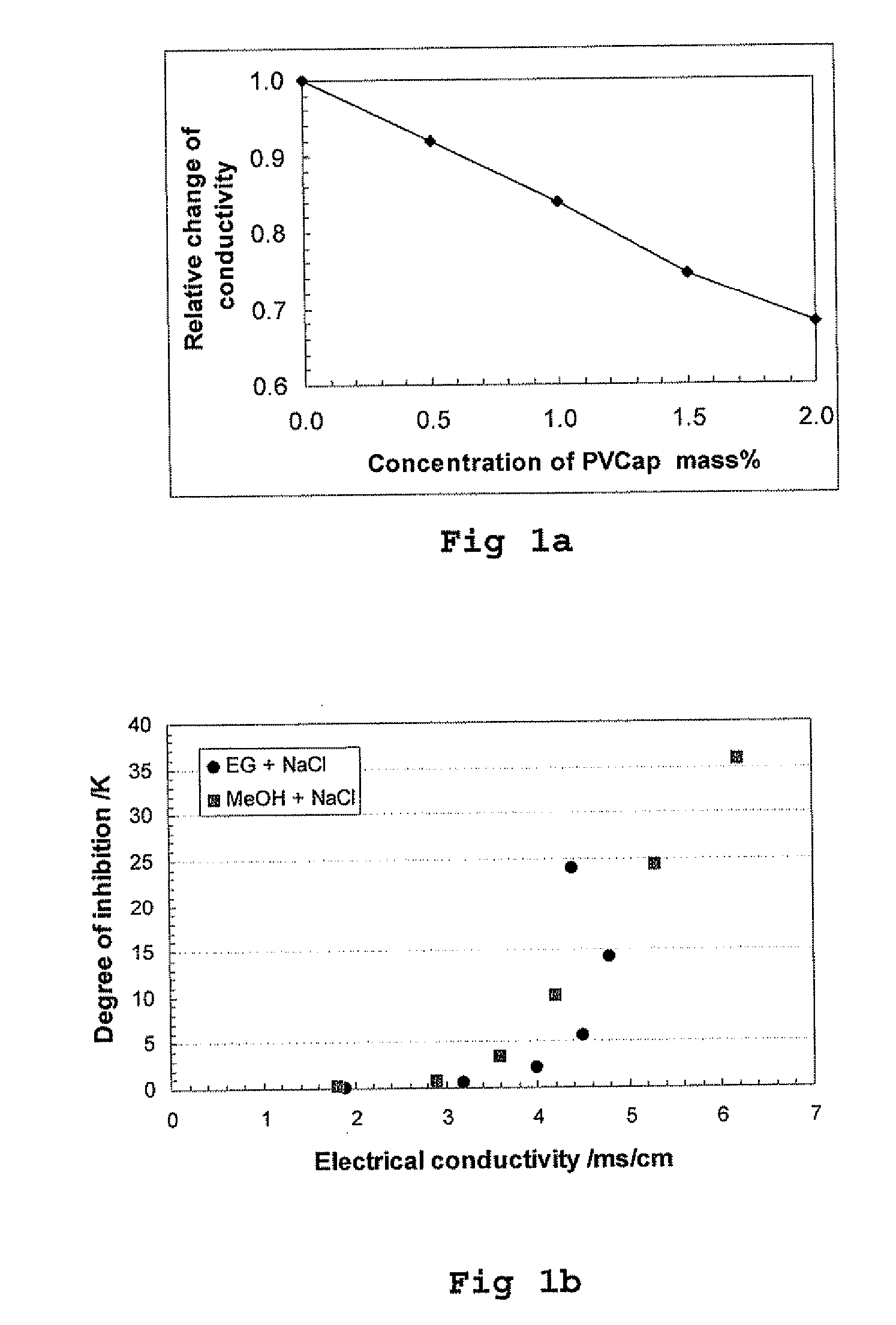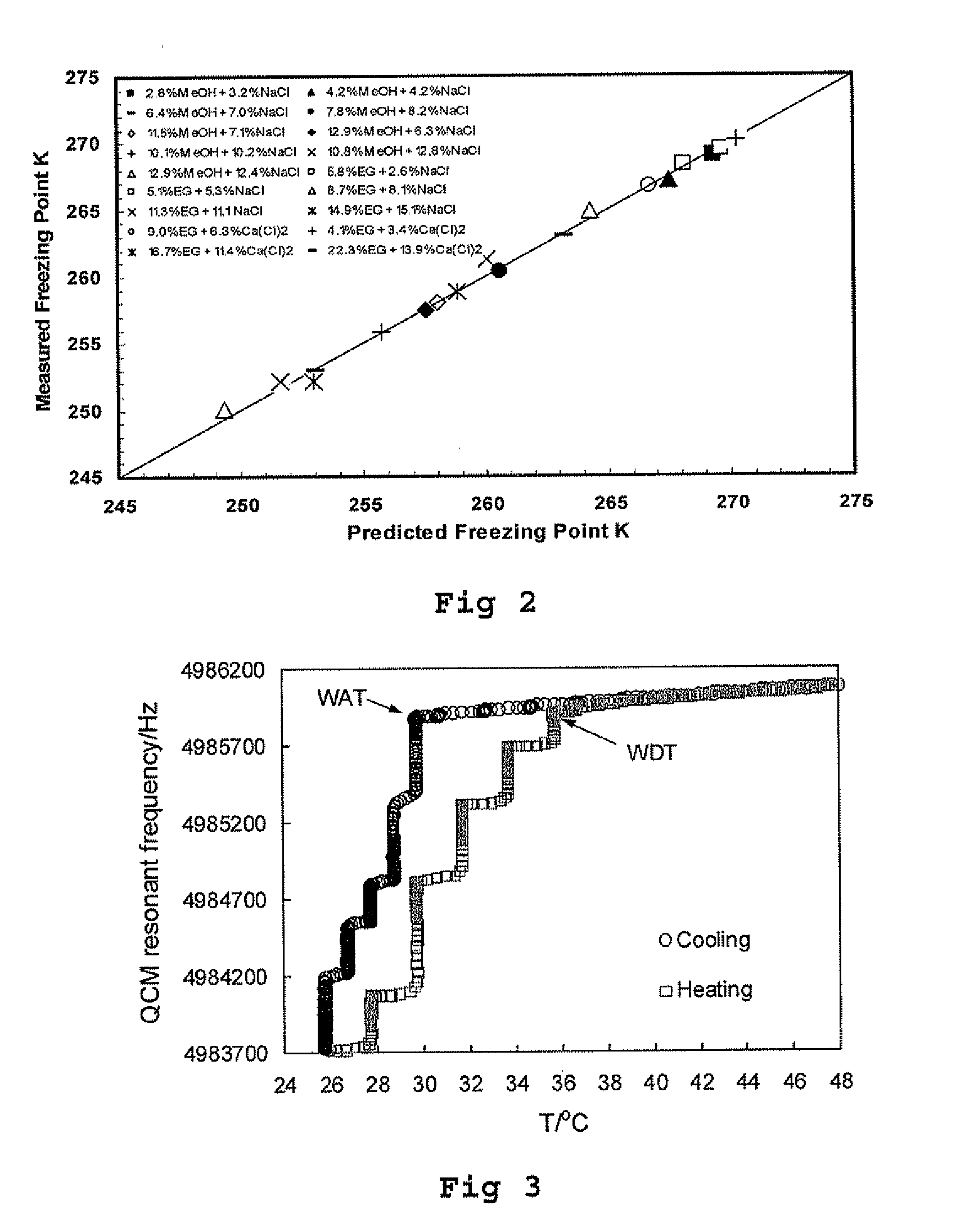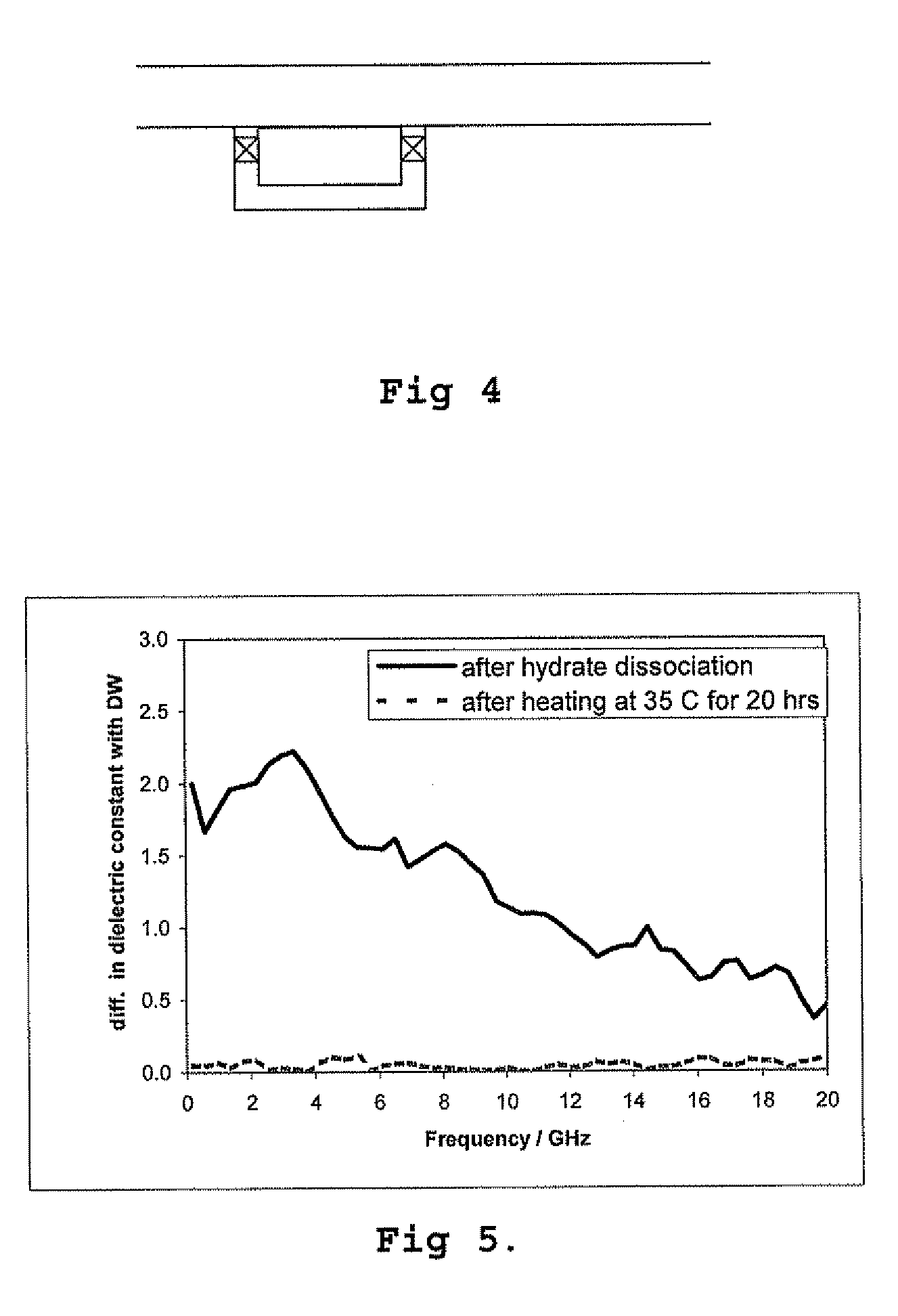Methods for monitoring hydrate inhibition including an early warning system for hydrate formation
a technology of hydrate inhibition and early warning system, applied in the field of hydrate formation, can solve the problems of reducing concentration, too much inhibitory use, serious operational and safety concerns, etc., and achieve the effect of preventing hydrate formation and blockag
- Summary
- Abstract
- Description
- Claims
- Application Information
AI Technical Summary
Benefits of technology
Problems solved by technology
Method used
Image
Examples
Embodiment Construction
[0014] According to a first aspect the present invention provides a method for determining the presence of a hydrate history in a fluid comprising the steps of:
[0015] a) obtaining a sample comprising a fluid which may or may not have a hydrate history;
[0016] b) cooling the sample and determining the amount of cooling required to induce hydrate formation; and,
[0017] c) comparing the amount of cooling required to induce hydrate formation in the sample with that of, a heat treated sample which has been heat treated to remove any hydrate history present before cooling, in order to detect the presence or otherwise of a hydrate history in the said sample.
[0018] The heat treated sample may be the same sample as was first used to determine the amount of cooling required to induce hydrate formation. Alternatively it can be another similar sample of the fluid being investigated. Conveniently a single sample is taken and divided into two portions, one for cooling, and the other for heat tr...
PUM
 Login to View More
Login to View More Abstract
Description
Claims
Application Information
 Login to View More
Login to View More - R&D
- Intellectual Property
- Life Sciences
- Materials
- Tech Scout
- Unparalleled Data Quality
- Higher Quality Content
- 60% Fewer Hallucinations
Browse by: Latest US Patents, China's latest patents, Technical Efficacy Thesaurus, Application Domain, Technology Topic, Popular Technical Reports.
© 2025 PatSnap. All rights reserved.Legal|Privacy policy|Modern Slavery Act Transparency Statement|Sitemap|About US| Contact US: help@patsnap.com



